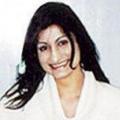
MORE than a third of children in Blackburn with Darwen left primary school failing to master the 3Rs — in line with the national picture — new Government figures reveal.
Statistics show that 65 per cent of year six children made the grade in reading, writing and maths, a one per cent fall.
The Department for Education has released the provisional results of this year’s SATs, which are taken by pupils in the final year of primary school, for every authority in the country. They show what percentage of children achieved the expected standard in the core subjects.
The new figures show nine per cent of pupils reached the higher standard in reading, writing and maths.
Nationally, 65 per cent of children met the expected standards and in the North West that figure stood at 64 per cent.
Nine per cent of children reached the higher standards, below the national average of 10 per cent and in line with the North West average.
Girls outperformed boy with 69 per cent achieving the grade compared to 60 per cent.
Nationally, 70 per cent of girls reached the expected level and 60 per cent of boys.
Maths was the strongest subject with 80 per cent of children reaching the standard — higher than the national average — and reading was the weakest subject, where 69 per cent made the grade.
In grammar, punctuation and spelling, the pass rate stood at 77 per cent, better than the country average of 74 per cent.
National figures show that Chinese pupils were the highest achieving group in this year’s SATs, with 80 per cent reaching the expected standard in reading, writing and maths.
Some 69 per cent of Asian pupils reached the expected standard in all three areas, along with 66 per cent of those with a mixed heritage.
Just under two-thirds of white pupils — 64 per cent — reached this level, along with the same proportion of black pupils.
The figures also show the achievement gap between pupils whose first language is English and those for whom it is a second language has almost closed.
SATs tests were overhauled in 2016 as part of Government reforms to introduce more rigorous assessments.
The tests are controversial, with some arguing they put too much pressure on children and are not a true picture of a school’s performance.
School Standards Minister Nick Gibb said: “We want all pupils to leave primary school equipped with the knowledge and skills that will help them to be successful in the rest of their education and beyond — that’s why I’m pleased to see an increase in pupils reaching the very highest standards at the end of primary school.”
A spokeswoman, for the More Than A Score campaign which is calling for changes to school testing, said: “However the department for education dress up their figures, they can’t disguise the fact that 35 per cent of 11-year-olds are starting secondary school having been branded as failures.
“Many may have been put off learning altogether at a critical stage in their education.
“Making primary age children sit a week of tests, under strict exam conditions, is the wrong way to measure pupils’ abilities and the overall performance of schools.”
Figures show that nationally poorer pupils continue to lag behind their richer peers, the Government statistics show.
In total, around half of disadvantaged pupils — those eligible for free school meals — achieved the expected standard across all three subjects, compared to 71 per cent of their more advantaged classmates. This gap is similar to 2018.
Paul Whiteman, general secretary of the National Association of Head Teachers (NAHT), said: “Children from disadvantaged backgrounds are the victims of a decade of austerity.”



Comments: Our rules
We want our comments to be a lively and valuable part of our community - a place where readers can debate and engage with the most important local issues. The ability to comment on our stories is a privilege, not a right, however, and that privilege may be withdrawn if it is abused or misused.
Please report any comments that break our rules.
Read the rules hereLast Updated:
Report this comment Cancel